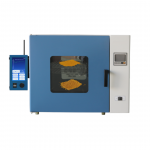
The Original Resinator’s Behind the Process: Crop-to-Cure® Part 3
From our two previous articles “The Original Resinator’s Behind the Process: Crop-to-Cure® ” part 1 & part 2, we found out more about freeze drying and the challenges of dealing with botanical products transitioning through many stages. One of the primary issues we worked to solve was one of time – how long would it take from harvest through curing utilizing the sublimation process? And as it turned out, trying to expedite the process of botanical lyophilization was proving to be more challenging than expected.










